ANALYTICAL SPECTROSCOPY
by Raymond P. W. Scott
D.Sc., F.R.S.C., C.Chem., C.Sci. F.A.I.C, F.C.S.
Essential Information for the Analytical Chemist
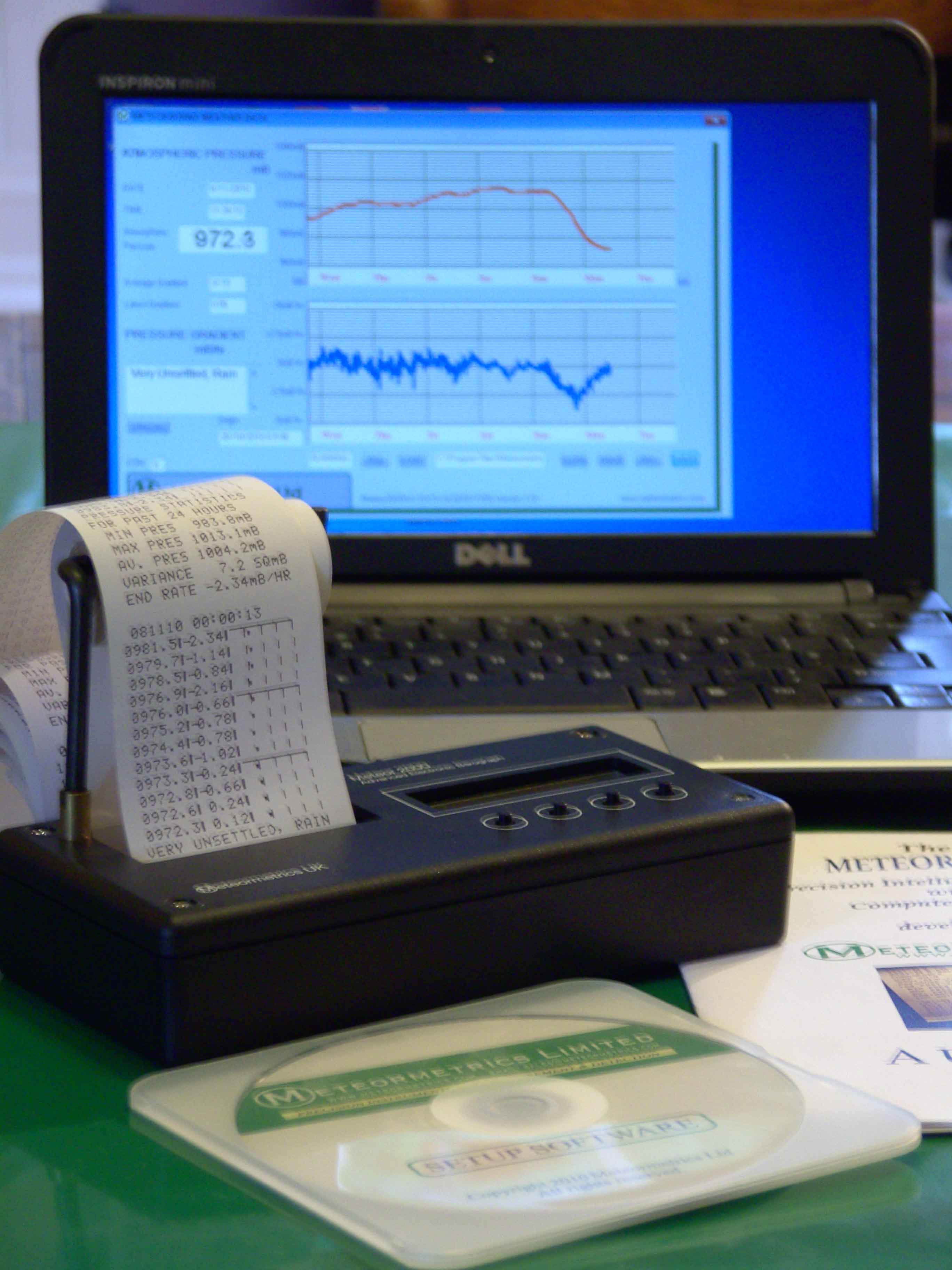
Specialising in custom-designed, precision scientific instruments, built, programmed and calibrated
to the most exacting standards. The range includes precision dataloging barographs,
with built-in statistical analysis, Barographic Transient Event Recorders
and computer-interfaced detectors and sensors
for environmental monitoring & process control.
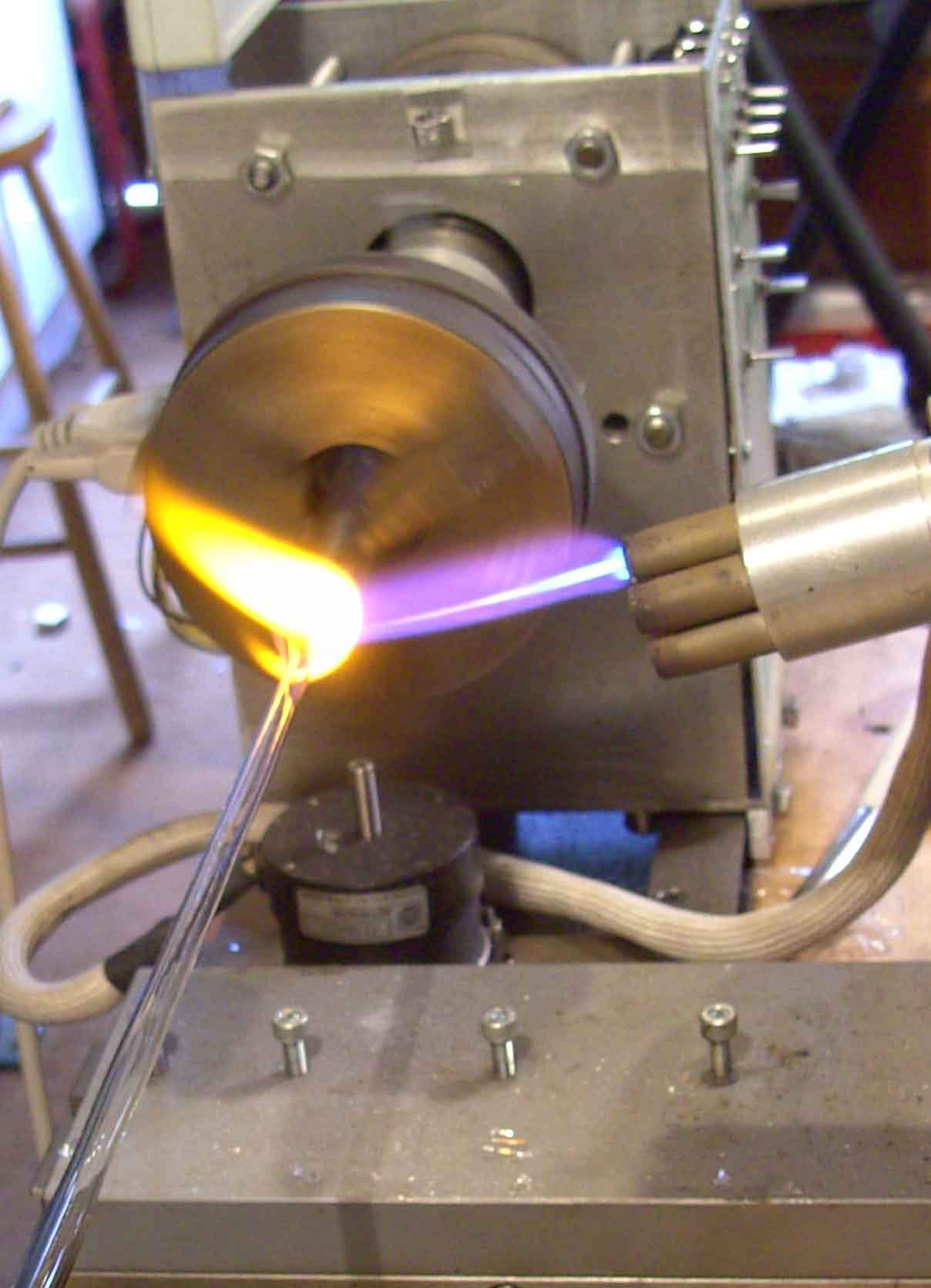
A site dedicated to scientific techniques, experimental methods, &
investigative tools for the inventor, researcher
and laboratory pioneer. Articles on glassblowing, electronics, metalcasting, magnetic
measurements with new material added continually. Check it out!
www.drkfs.net
Atomic Absorption Spectra
Atomic
absorption spectroscopy is largely used for quantitative purposes
often in the measurement of trace levels of metals in pollution
studies, forensic studies and in alloy analysis. Quantitative
measurements can be made employing either absorption peak heights or
peak areas. At low concentrations both systems will give reasonable
linear responses but at higher concentrations peaks areas are linear
over a wider sample concentration range although still not completely
linear. At still higher concentrations two analyses are often carried
out the first identifying the approximate sample concentration
followed by a second analysis employing an internal standard the
concentration of which is close to that estimated for the sample. The
types of response that can be expected are shown in figure 24.
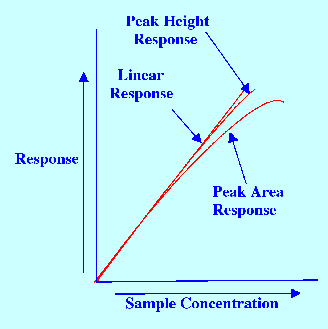
Figure
24. Peak Height and Peak Area Response to Sample Concentration
Compared with a Truly Linear Response
If the
calibration graph is sensibly linear, a simple procedure can be
employed for the analysis. Two identical volumes (VS)
of the sample ((x) and (y))
are taken and a small volume (VSt)
of a standard solution (concentration (CSt)
in the solvent added to sample (x) and
the same volume of solvent only
added to sample (y). Then if the two
samples are analysed giving absorbance values (Sx)
and (Sy),
then the concentration of the sample (CS)
is given by,
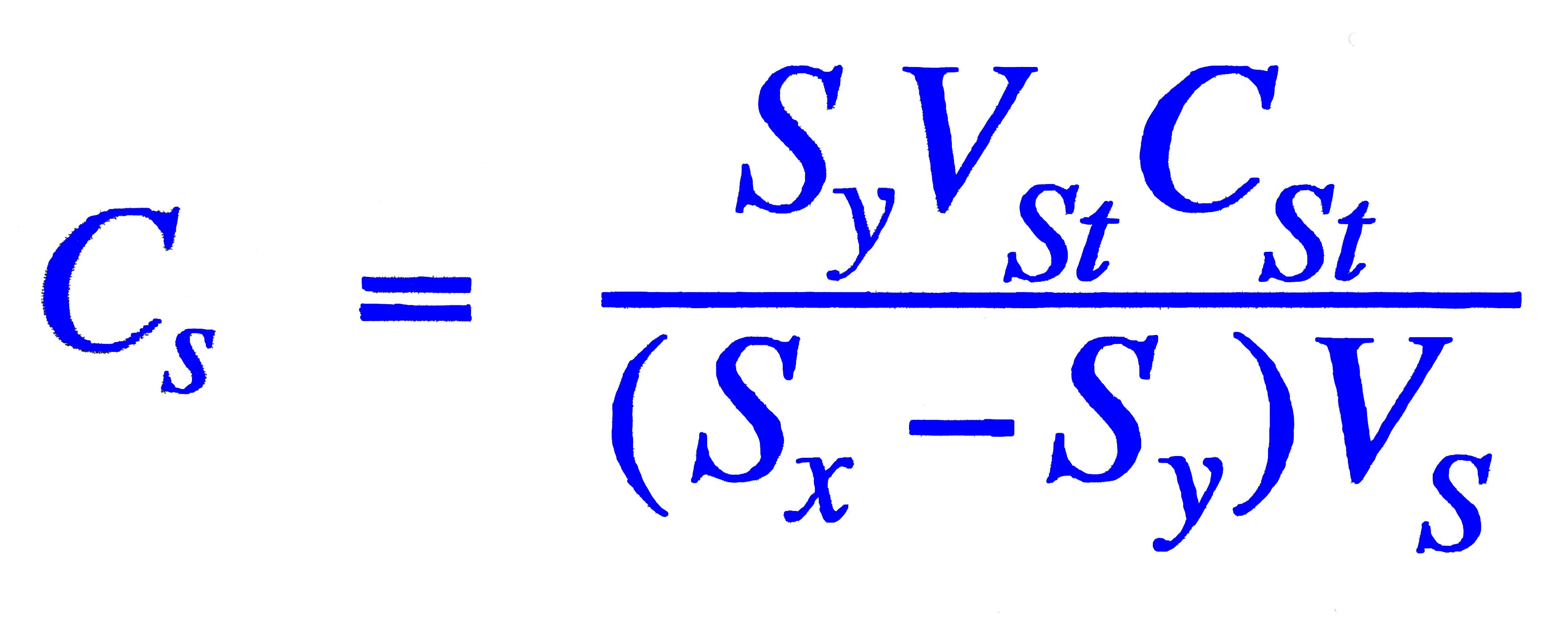
A number of other
procedures are available that can be employed, some more suitable for
one particular spectrometer system than another but the manufacturer
normally supplies a range of basic analytical routines appropriate
for the instrument concerned.
There are also many
sources of interference that can affect the quality of the analysis
about which the chemist should be aware. Employing flame atomic
absorption (Flame AA) techniques any difference between the
viscosity, surface tension and density of the sample and the
reference solution can affect the nebulization efficiency and, thus,
the number of free atoms in the flame. The presence of certain
volatile organic solvents can improve nebulization and increase the
flame temperature. However, a major problem can arise from the
presence of less volatile or involatile organic material as these can
easily raise background emission and cause variations in the flame
temperature. If a Graphite Furnace or one of its modifications is
used, however, the sample is placed directly in the furnace without
Atomization and the above interference sources are less important.
Solvents such as xylene , isobutyl ketone and hexane have been shown
to be sources of interference even in Graphite Furnace systems. In
general, the physical nature of the sample and reference should be
matched as close as possible.
In Flame AA the
formation of thermally stable oxides, carbides and nitrides and the
interaction of the analyte with anions and cations are common causes
of chemical interferences. These effects can be reduced or avoided by
raising the ionization temperature to dissociate the less volatile
substances, inclusion of the interfering substances in both the
reference and analyte solutions and the use of appropriate reagents
to render the thermally stable materials more volatile. However, the
use of electrothermal methods such as the Graphite Furnace to produce
Atomization again reduces, and in most cases eliminates, most
chemical sources of interference.
Ionization
of the analyte will reduce the number of free
atoms
available for excitation. This effect can sometimes be reduced by
lowering the Atomization temperature or by adding an excess of
ionization suppressor (i.e.
an easily ionized element) to the standard reference and sample
solutions. Again, the use of electrothermal methods such as the
Graphite Furnace to produce Atomization reduces the effect of
ionization interference. The addition of easily ionized elements to
the sample and reference solutions to reduce ionization when
employing Electrothermal Atomization may well cause loss of
sensitivity.
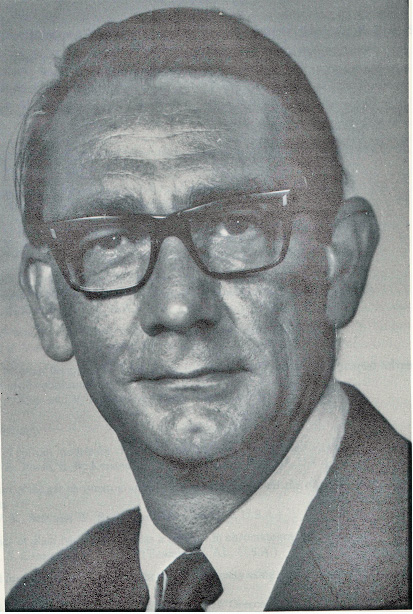
About the Author
RAYMOND PETER WILLIAM SCOTT was born on June 20 1924 in Erith, Kent, UK. He studied at the
University of London, obtaining his B.Sc. degree in 1946 and his D.Sc. degree in 1960.
After spending more than a decade at Benzole Producers, Ltd. Where he became head of
the Physical Chemistry Laboratory, he moved to Unilever Research Laboratories as
Manager of their Physical Chemistry department. In 1969 he became Director of Physical
Chemistry at Hoffmann-La Roche, Nutley, NJ, U.S.A. and subsequently accepted the position
of Director of the Applied Research Department at the Perkin-Elmer Corporation, Norwalk, CT, U.S.A.
In 1986 he became an independent consultant and was appointed Visiting Professor at Georgetown
University, Washington, DC, U.S.A. and at Berkbeck College of the University of London; in 1986
he retired but continues to write technical books dealing with various aspects of physical chemistry
and physical chemical techniques. Dr. Scott has authored or co-authored over 200 peer reviewed
scientific papers and authored, co-authored or edited over thirty books on various aspects of
physical and analytical chemistry. Dr. Scott was a founding member of the British chromatography
Society and received the American Chemical society Award in chromatography (1977), the
M. S. Tswett chromatography Medal (1978), the Tswett chromatography Medal U.S.S.R., (1979),
the A. J. P. Martin chromatography Award (1982) and the Royal Society of Chemistry Award in
Analysis and Instrumentation (1988).
Dr. Scott’s activities in gas chromatography started at the inception of the technique,
inventing the Heat of Combustion Detector (the precursor of the Flame Ionization Detector),
pioneered work on high sensitivity detectors, high efficiency columns and presented fundamental
treatments of the relationship between the theory and practice of the technique.
He established the viability of the moving bed continuous preparative gas chromatography,
examined both theoretically and experimentally those factors that controlled dispersion
in packed beds and helped establish the gas chromatograph as a process monitoring instrument.
Dr. Scott took and active part in the renaissance of liquid chromatography,
was involved in the development of high performance liquid chromatography and invented
the wire transport detector. He invented the liquid chromatography mass spectrometry
transport interface, introduced micro-bore liquid chromatography columns and used them
to provide columns of 750,000 theoretical plates and liquid chromatography separations
in less than a second.
Dr. Scott has always been a “hands-on” scientist with a remarkable record of accomplishments in chromatography ranging from hardware design to the development of fundamental theory. He has never shied away from questioning “conventional wisdom” and his original approach to problems has often produced significant breakthroughs.




